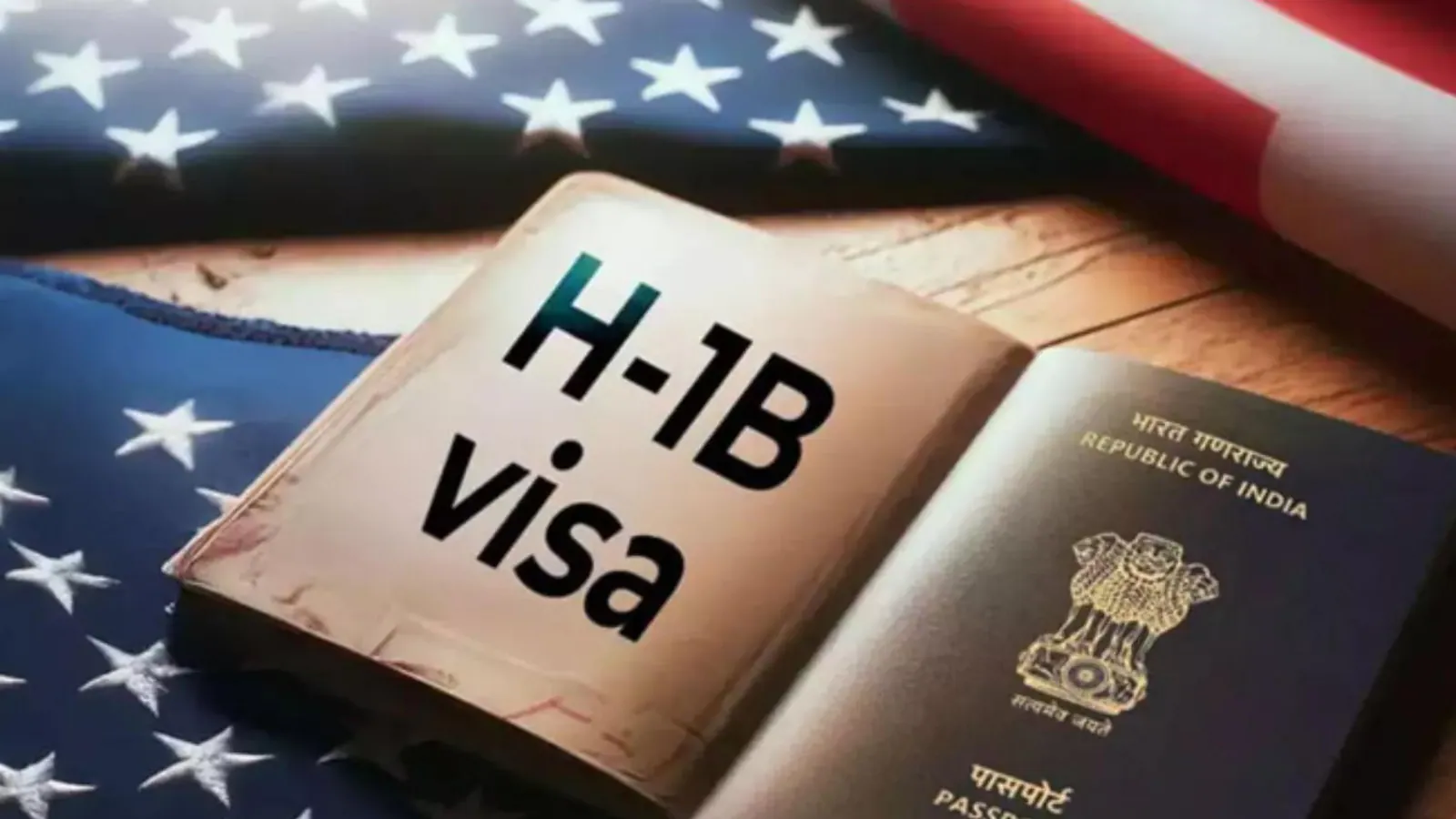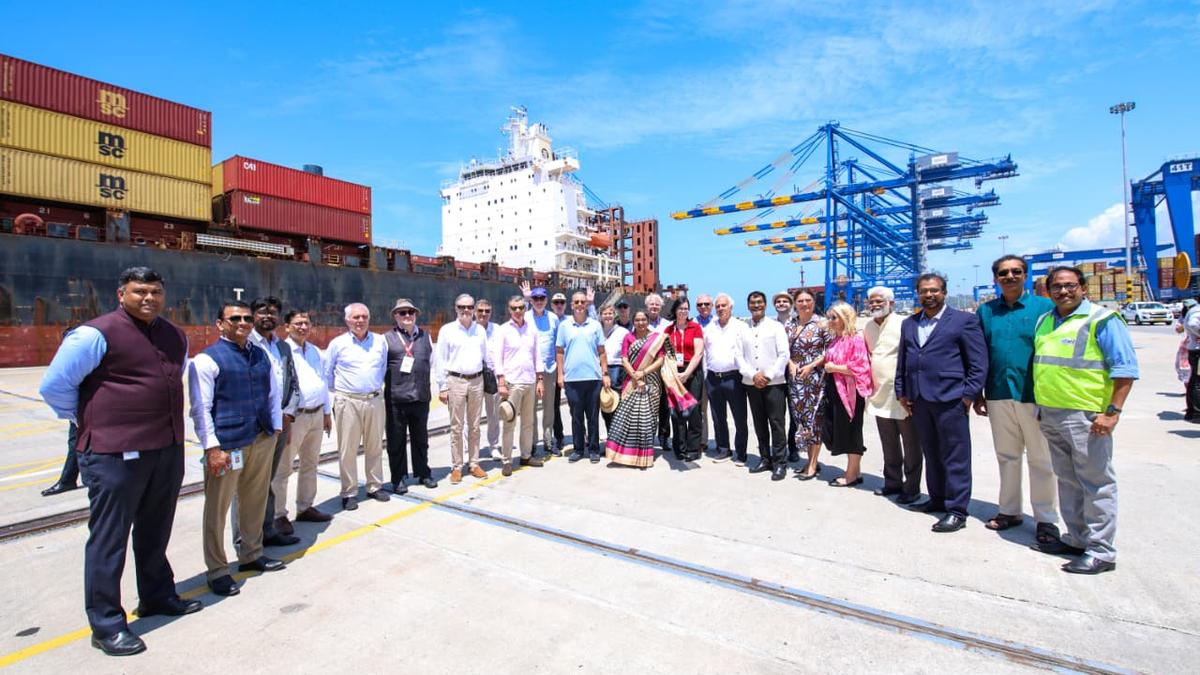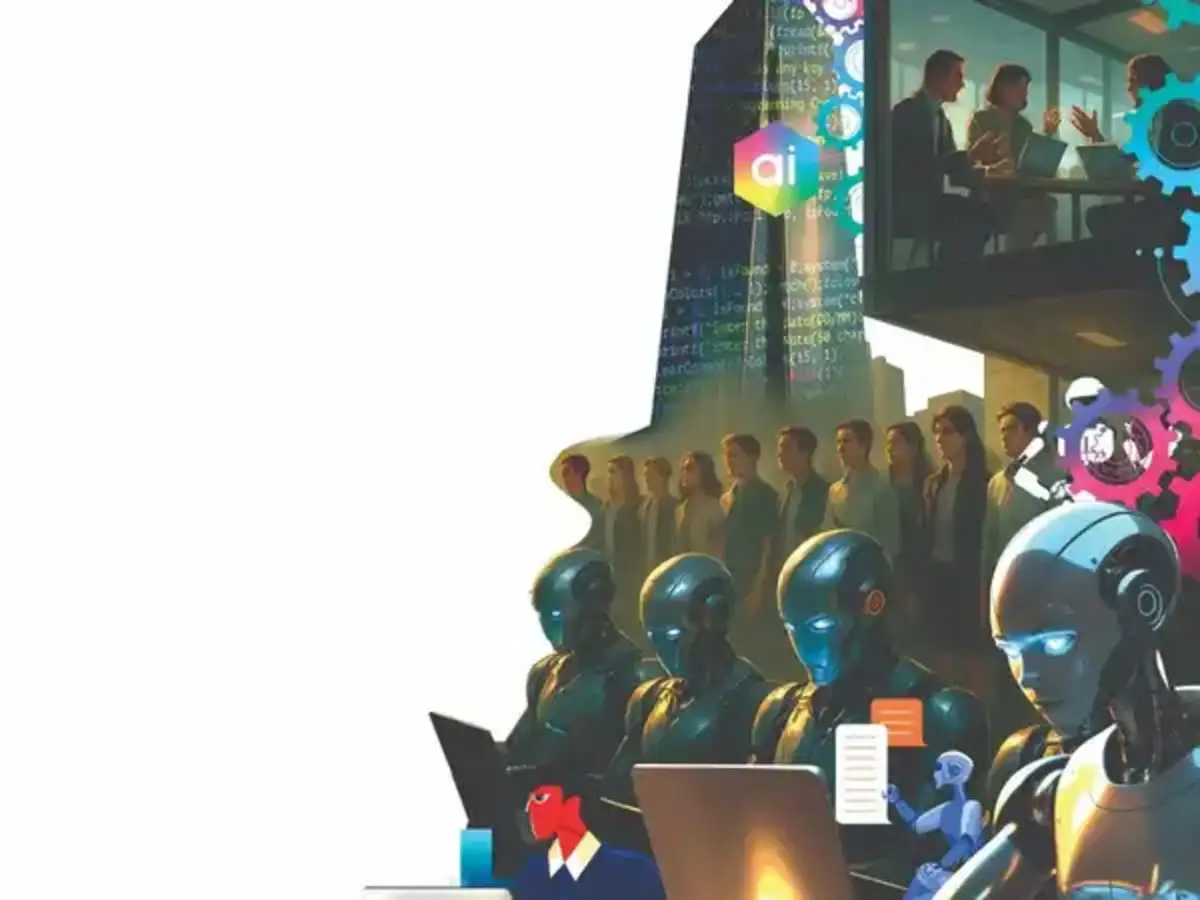By Aditya Pittie,News18
Copyright news18

The White House’s move to slap a $100,000 fee on H-1B visas looks, at first blush, like a blow to Indian talent and the companies that rely on it. In reality, it is an inflection point that will prompt the end of brain drain, force a faster pivot to “build in India, for the world”, and strengthen the foundations of Viksit Bharat. Meanwhile, the United States will find that a paywall cannot conjure up a domestic Science, Technology, Engineering, and Mathematics (STEM) pipeline overnight and that throttling high-skill immigration chokes a key pillar of its own innovation engine.
First, the facts. On September 19, 2025, the administration announced a $100,000 payment attached to H-1B visas. Whether it survives court scrutiny is uncertain; its deterrent effect on the talent pool and employers is not.
For India, this is the moment to turn a historical leakage into a virtuous cycle. Indian nationals have long dominated the H-1B pipeline—roughly 70% of approvals in many years—which means any steep fee impacts Indian-origin talent and their prospective employers the hardest. But it also means that the default option of “move to America” just became economically irrational for tens of thousands of young engineers and researchers. If the tap to the US narrows, the pool at home deepens, and that is precisely where India’s digital public infrastructure, manufacturing push, and startup ecosystem can turn quantity into compounding quality.
Remember the macro context. India already produces one of the world’s largest numbers of Science and Engineering (S&E) graduates, about 2.25 million, nearly triple the US number. That gap has only widened with the surge of affordable engineering and computer science programs, along with the government’s heavy focus on skilling. The United States, by contrast, graduates far fewer S&E majors and relies disproportionately on imported skills, especially in software, semiconductor technology, and AI. You cannot impose a $100,000 toll and expect a domestic pipeline to materialise in months. Education systems develop over decades, not quarters.
The adverse consequence to US innovation is not speculative. Research shows that high-skill immigrants are powerful contributors to patents, startups, and frontier R&D. Hence, curbing H-1B flows reduces firm-level invention and regional innovation capacity. History shows that when you restrict high-skill visas, you do not seamlessly replace those workers with equally productive domestic hires; you shrink or offshore the work.
Which brings us to India’s immediate upside: production and R&D relocation. If hiring in the US is suddenly $100,000 per head more expensive, CFOs will do the math. The smart choice is not to leave roles unfilled; it is to move teams to where the talent is, at scale and speed. India’s Global Capability Centres (GCCs) are already booming, with 1,900 centres employing approximately 2.2 million professionals. A punitive US paywall simply pulls more design, product, data, and shared-services work into India’s cities.
We are not talking about the call centres of yesteryears; we are talking about mission-critical engineering: chip design, AI/ML, cybersecurity, Development Operations (DevOps), risk analytics, and full-stack product ownership. Zinnov-NASSCOM data shows that hundreds of GCCs are scaling their headcount and scope; this fee shock will accelerate that migration and increase the value-added mix of work done in India. Add ONDC for commerce rails, UPI + Account Aggregator for finance rails, and a fast-maturing hardware ecosystem (semiconductors, electronics, EVs), and you have the ingredients for “Brain Gain 2.0”.
The commonly touted US rationale is that a high fee will “force companies to hire American”. That assumes the US has a bench of ready, equally productive STEM workers waiting to be slotted in. The data and employers disagree. The fee doesn’t upskill a high-school pipeline; it doesn’t expand graduate seats in Computer Science and Electrical Engineering; it doesn’t fix math proficiency or teacher shortages.
For India’s young professionals, the calculus is shifting in our favour:
Total career ROI: A $100,000 hurdle for your US employer is an implicit nudge to build your career at home, maybe with the same global company, but on Indian soil.
Faster responsibility: As teams shift, India-based engineers and Project Managers will own products end-to-end, not just modules.
Startup spillovers: Talent concentration plus lower opportunity cost of entrepreneurship equals more high-quality startups.
Policy tailwinds: GST 2.0 simplification, faster refunds, DPI-enabled compliance, and ease-of-doing-business will improve cash flow for MSMEs and startups serving global markets from India.
For policymakers, the playbook is straightforward:
Make India the default landing pad: fast-track approvals for new GCCs, offer predictable SEZ-like regimes, and guarantee power and network quality in designated tech clusters.
Double down on advanced skilling: AI, chip design, robotics, cybersecurity, biotech, etc. via industry-designed apprenticeships and micro-credentials stackable toward degrees.
Deepen capital pools: Expand Small Industries Development Bank of India (SIDBI)/National Investment and Infrastructure Fund (NIIF) anchored funds-of-funds; catalyse pension and insurance money into patient venture and growth equity.
Smooth global work: Make it trivial for MNCs to remotely employ India-based staff compliantly; simplify IP ownership for India-led product teams.
Protect talent mobility: Ensure non-compete enforcement does not hinder switching, while strengthening IP protection and data regimes to ensure global work remains confident in India.
And finally, for Indian companies: go on the offensive. If your US competitors are about to face talent shortages and soaring costs, this is your chance to capture market share. Expand domestic hiring, invest in training, and establish long-term client relationships as partners who can deliver quickly and cost-effectively. The same approach applies to universities: increase high-quality master’s seats in CS/EE/AI, integrate co-op programs with GCCs, and invite top faculty to teach intensive modules. The old script of brain drain—ace JEE/GRE, move to the US, and hope for a visa—will be rewritten as building here and leading globally.
The default flow of Indian students to the US will slow, because the policy has deliberately turned a tap into a trickle. That, in turn, will starve the US innovation pipeline at the margin: fewer immigrant-founded startups, thinner patenting in key hubs, and less diversity in research labs. Even if mega corporations absorb the fee for a subset of roles, the long tail of startups and mid-sized companies—the true engine of breakthrough innovation—will not. They will build teams where the talent is affordable and abundant. Increasingly, that’s India.
There’s a deeper point here about national strategy. For decades, America’s openness to global talent masked deficits in its K-12 math and science pipeline and the cost structure of higher education. High-skill immigration papered over those cracks and powered US hegemony in tech and science. A sudden $100,000 wall exposes those weaknesses. You cannot fee your way to a semiconductor renaissance or an AI leadership moat. You must educate, attract, and retain talent. India, by contrast, has quietly built one of the world’s largest S&E undergraduate bases and the digital rails that let that base transact, sell, and ship to the world
So yes, the announcement will cause anxiety. Families will worry, some offers will be rescinded, and a few plans will be paused. But step back, and you see a long-term strategic boon: talent retained, work relocated, GCCs upgraded, and startups energised. If the US insists on closing a door, India must open ten windows: to capital, to markets, to research partnerships, and to world-class jobs in India.
History will likely record this fee not as the day Indian dreams dimmed, but as the day India stopped exporting its future to the US and the day the Viksit Bharat flywheel spun faster.
The author is an angel investor and startup mentor for the Atal Innovation Mission, Government of India, and the Atal Incubation Centre-Rambhau Mhalgi Prabhodhini. He is presently the Convenor (Western Maharashtra) of the BJP Intellectual Cell and has recently co-edited the book Modi’s North East Story. Views expressed in the above piece are personal and solely those of the author. They do not necessarily reflect News18’s views.



